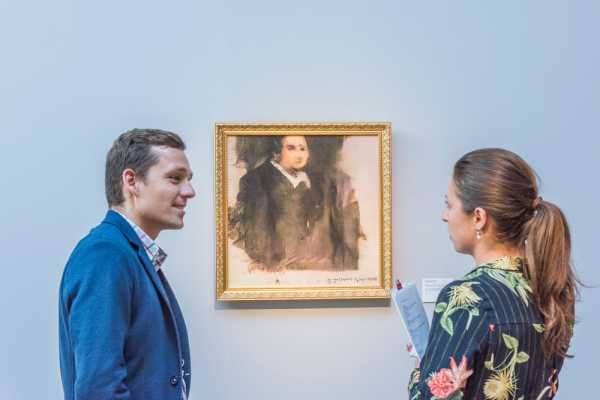
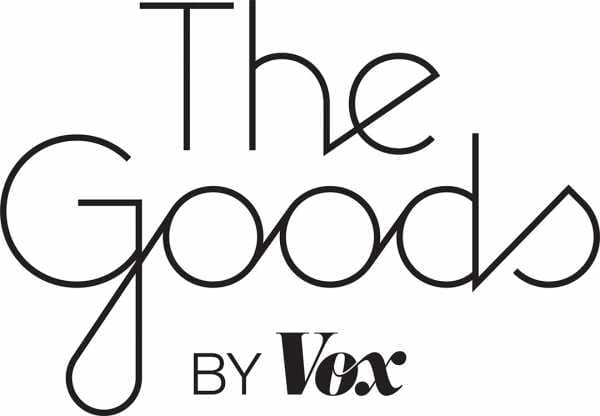
From lab-grown diamonds to computer-generated perfumes to gadgets as stylists to synthetic whiskey, it’s hard to find a category of goods today that hasn’t been infiltrated by robots.
The latest industry to get the treatment is art. Last week, British auction house Christie’s sold its first piece of computer-generated art, titled “Portrait of Edmond Belamy.” The piece, which was made by a French art collective named Obvious, sold for a whopping $432,500 — about 45 times its estimated worth — signaling that while there might be those in the art world that will turn their noses up at computer-generated art, there plenty of others who take it seriously and are willing to pay for it.
The portrait was created via an algorithm, which combed through a collection of historical portraits. Then it generated a portrait of its own, which was printed on canvas. In a blog post discussing the sale, Christie’s wrote how AI could be the future of art, noting how an AI can “model the course of art history,” since it can comb through a chronology of pieces, showing how “the whole story of our visual culture were a mathematical inevitability.”
But the painting’s sale brings the light the question of what is art, and what constitutes “real” versus authentic when algorithms come into the picture — literally.
How did a computer create a piece of art?
“Portrait of Edmond Belamy” was made by Obvious, an AI research studio in Paris that’s run by three 25-year-old researchers named Hugo Caselles-Dupré, Pierre Fautrel, and Gauthier Vernier. Obvious uses a type of AI called a generative adversarial network, or GAN.
It combs through data points — in this case, historical portraits — and then create its own based on all that it’s learned. It’s how IBM is creating perfume using formulas provided by global fragrance company Symrise. It’s also how a data scientist created more than 15,000 AI internet cats via something called a Meow Generator.
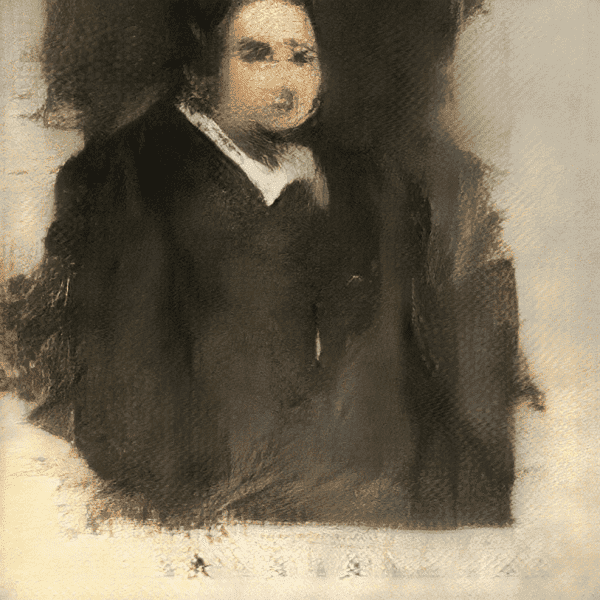
Caselles-Dupré explained to Christie’s that Obvious “fed the system with a data set of 15,000 portraits painted between the 14th century to the 20th.”
The result is Edmond, a (fictional) man wearing a dark coat with a white collar. “Portrait of Edmond Belamy” looks like it could have been a portrait of some European nobleman you’d see in the Met or the Louvre. Christie’s notes, too, that there’s also “something weirdly contemporary” about Edmund, which Caselles-Dupré says is due to the art’s AI having a “distortion” built into its artistic abilities, which is why his face is blurred. The piece has been signed with the mathematical formula used to create it.
Obvious has created 11 portraits total of the fictional Belamy family, who each come with their own somewhat kitschy taglines. Take, for example, Madame De Belamy, who has fair skin and wears a powder blue dress and matching hat and has the tagline “Who said that not having a soul is a default ? It makes me unboundable, adaptative, and reckless.”
All these pieces have blurred faces, like Edmund, and are vague enough in appearance that they could come off as nobility from several countries.
Richard Lloyd, the international head of Christie’s print department, believes there’s a big market for AI-built artwork — as demonstrated by the amount of money spent by Edmund’s buyer, who remains anonymous.
“It is a portrait, after all,” Lloyd, who was in charge of the sale, said. “It may not have been painted by a man in a powdered wig, but it is exactly the kind of artwork we have been selling for 250 years.”
Is this really art?
When lab-grown diamonds starting hitting the market a few years ago, there was mass uproar, particularly among heavyweights in the industry like De Beers. “Real is rare,” the company insisted, and therefore synthetic diamonds, regardless of their genetic makeup or sparkle, were not to be taken seriously. Even when De Beers eventually announced they were creating lab-grown diamonds earlier this year, the company listed them with costume jewelry prices, which it apparently hoped would send a message.
The “Portrait of Edmond Belamy” hits a similar vein. Should computer-generated art be considered “real art?” Is it truly creative? Does it hold value beyond what some anonymous bidder wants to drop at Christie’s?
Ahmed Elgammal, the director of the Art and Artificial Intelligence Lab at Rutgers University who works on GAN, believes AI-created art should be looked at an artistic craft.
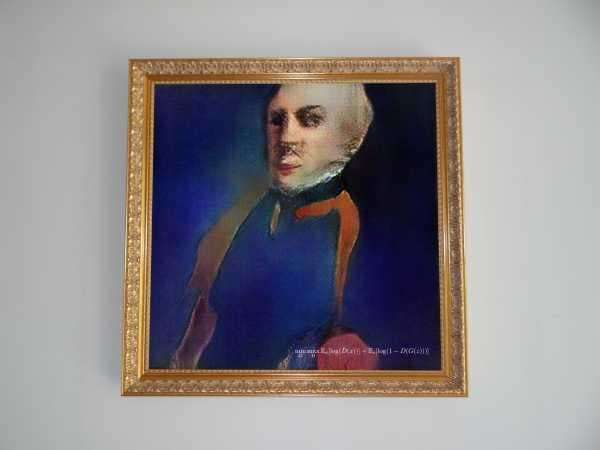
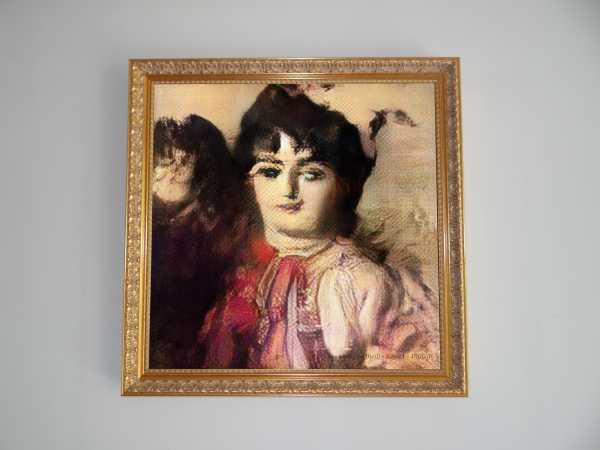
“Yes, if you look just at the form, and ignore the things that art is about, then the algorithm is just generating visual forms and following aesthetic principles extracted from existing art,” he told Christie’s.
“But if you consider the whole process, then what you have is something more like conceptual art than traditional painting. There is a human in the loop, asking questions, and the machine is giving answers. That whole thing is the art, not just the picture that comes out at the end. You could say that at this point it is a collaboration between two artists — one human, one a machine. And that leads me to think about the future in which AI will become a new medium for art.”
There’s already controversy about ownership
With AI on the rise, the art market could soon be flooded with machine-generated pieces. But if the discussion of authenticity isn’t what gets people upset, the issue of ownership certainly might.
In the case of Edmund, for example, there’s the question of who should get the credit. Is the AI that created him and the entire Belamy family considered the artist, or would that be the three AI researchers at Obvious? And if the art is inspired by hundreds of thousands of pre-existing pieces, how much is the process informed by a typical degree of borrowing or inspiration, and how much is just swiping?
This is already a brewing issue. The AI that was used to create “Portrait of Edmond Belamy” wasn’t even written at Obvious, as first reported by the Verge. It was created by Robbie Barrat, a 19-year-old AI artist who’s shared his research openly on the web.
On Twitter, Barrat called out Obvious; he believed it “really just used my network and are selling the results.”
While screenshots show Barrat was in contact with Obvious about using his AI, he tweeted that how he believed it was being used for “some open source project.” In an email to Vox, Barrat says he’s not coming after Obvious for some of the $432,500 that the Edmond portrait was sold for, but is still upset about the auction.
”I’m not concerned about getting any money from this: I really just want the legitimate artists working with AI to get attention,” he says. “ I feel like the work Christie’s has chosen to auction off is incredibly surface level.”
In a statement to Vox, Obvious wrote that “there are many people experimenting with different ways to use GAN models,” and that “indeed, Robbie Barrat deserves credit, which we gave in our main Medium post as soon as he asked back in April. We also credited him right after the auction.” When asked if it would be sharing its profits, Obvious did not offer comment.
Barrat believes that Obvious’s work with AI in art is sending “the wrong impression.” He says the art world is interested in using “AI as an artist’s tool, and really approach AI in art as something to collaborate with — not subscribing to Obvious’s false narrative of AI as something to replace the role of the artist.”
Sourse: vox.com






